Research in Tubetube, February 2022
Report by Alfred Faiteli
This study focuses on the five islands of the Bwanabwana Local-level Government. These islands are in the southeast of Milne Bay Province; sometimes referred to as the Engineering Group of islands or the Southern Massim area. Over 6,000 people live in these islands, speaking the Austronesian language known as Tubetube or Ware. The people are known for their seafaring, fishing, and trading skills. In the past, Tubetube was one of the main trading islands in the Massim area and central hub in the extension of the kula network in the region—a ceremonial exchange system in much of the Massim. As a result, the people were largely involved in the exchange of shell valuables, food items, knowledge, and friendship.
Christianity has been in the area since the early 1890s, with Methodist influence in this area being prevalent and profound, having both positive and negative consequences. Government services also exist on these islands together with the support of churches.
Today, these islanders continue to depend on the sea for their survival, as well as on other small family, social, and economic networks created to sustain their livelihoods with both government and church support that are well established and intact in these island communities.
The Researcher
Alfred Faiteli carried out the True Echoes research project in the Tubetube or Bwanabwana area of Milne Bay Province, Papua New Guinea. He has a BA degree from the University of PNG (UPNG), a graduate diploma and MA degree from the Australian National University, and a PhD from the University of Liverpool (UK). He currently teaches demography and population studies at UPNG. He has vast teaching and research experience, and continues to coordinate postgraduate studies and supervise postgraduate students at UPNG.
The following photographs were taken on Tubetube, Anagusa, and Ware during the fieldwork.
Recordings
Gum Gum by Sineudi Lusim
Recorded 3 February 2022
(1 minute 47 seconds)
This song sung by Sineudi Lusim is precisely the original one in the old recording (C62/1449 21 Gum Gum). She was the only person interviewed in the research who could remember and sing a song from the Bwanabwana recording as it was sung in 1904. This was the breakthrough and highlight of the study for the Bwanabwana research project.
This is a love song about a young man and his plea for his sweetheart to be reunited with him. For some reason, the woman was not accepted by the man’s people, and as a result she was sent away. The young man broken-heartedly sings this song as a plea to bring his wife back: a young, beautiful, and virtuous woman so that he can make love to her. Culturally, making love does not just have a sexual connotation, but it reinforces the relationship between parents and children, bonding families together in clans for inheritance of wealth including land as well as maintaining one’s status and dignity in society. A good woman is always one that opens her heart and home, and accommodates all members of the clan to live in harmony, and sustains and maintains her rights over the land and its resources through the number of children she bears. This is the value and goodness of a virtuous woman as depicted in this song.
Ku naga ku nim e
Ku e nim lagou
Yowa palo yohoia
Ku naga ku e nim e
Ku e nim lagou
Yowa ka kalogena
Yowa waiwaisana
Yalo nega negaán
You go you bring her back
You bring back my wife
Woman whom you sent away
You go you bring her back
You bring back my wife
Young and beautiful girl
A good woman of value
And let me make love to her
New Baebae Song
Kasadekawa village, Ware Island
Recorded 5 February 2022
(2 minutes 19 seconds)
This is a shouting song (yoga) which is usually performed immediately after the death of a paternal relative. It, however, can also be performed later at a mortuary feast (ligaliga) in remembrance of a deceased father. Baebae means ‘fish’ in Old Ware language.
This is a song performed during the death of a father. This song accompanies a ceremony used to compensate and show respect for a paternal relative. It is usually done by the male children, and involves the catching and distribution of fish to signify the father’s main role and status as the primary provider of the family. This is done to remember his legacy as a good fisherman.
Baebae e
Wali moti a u u u
Baebae e
Wali e a u u u
Wali moti a u u u
Wali e a u u u
O o o o o
New Kwalalo Gum Gum Song: Mane Magesubu
Recorded 3 February 2022
(1 minute 16 seconds)
This is a Kwalalo gum gum about an eagle. This may be a farewell or love song expressed in a poetic language of the flight of eagle as it soars high into the sky and glides swiftly through the air. Gum gum is a Misima word used to describe songs that are usually used for a good cause and sung in a sentimental tone, such as in lullabies and love songs.
The song describes the bird’s movement, opening one side of the wings and flapping the other and how the singer wishes to become like the eagle’s feathers so he/she can fly and soar high into the sky destined for another land. The song describes the eyes of the eagle like a mirror and a strong a voice that the singer envisages to ride on into the sky on this farewell flight to another land.
Mane magesubu
I ou mulolu
Mane magesubu
I ou mulolu
Mane magesubu
Pepem etega no abu
Pepem etega e lau wi
U ku num num ula
Dagulim no dagu
Matam no gelasi
Anam no gelu
Mane magesubu
I ou mulolu
Bird eagle
Flew gracefully
Bird eagle
Flew gracefully
Bird eagle
One of your wings you harness
One of your wings you descend
You echo echo in the forest
Your feather my feather
Your eyes my sight
Your voice my pillow
Bird eagle
Flew gracefully
Historical Recordings
The following cylinders from the Daniels Ethnographical Expedition to British New Guinea 1904 Cylinder Collection (C62) were researched by Alfred Faiteli.
| British Library shelfmark | Recording title | Performer name | Recording location | Recording date | Content description | Performer description | Recording notes | Languages | Genre | Recordist | Recording length | Recording trip | Description of cylinder | Collection title | Cylinder location | Images of cylinder containers / documentation | Related print publication: | Related print publication: | Related print publication: | Related print publication: | Related print publication: | Related print publication: |
|---|---|---|---|---|---|---|---|---|---|---|---|---|---|---|---|---|---|---|---|---|---|---|
| C62/1440 | 19 Yadarai Tube Tube | Unidentified (singer, male) | Tube Tube, Slade Island, British New Guinea | 5 August 1904 | 1. Announcement: "Yadarai. The third song, sung at the Waia ceremony, Rogeia. Originally learnt from the Durupi[?] in Milne Bay. Sung Tube Tube, 5th August 1904." 2. Unaccompanied male vocal solo. A favourite dancing song. | Good quality recording with strong signal, but some repeating grooves. | Bwanbwana | Field recordings | Seligman, Charles Gabriel | 3'18" | Daniels Ethnographical Expedition to New Guinea 1904 | Brown wax cylinder | Daniels Ethnographical Expedition to New Guinea 1904 Cylinder Collection (C62) | British Library | 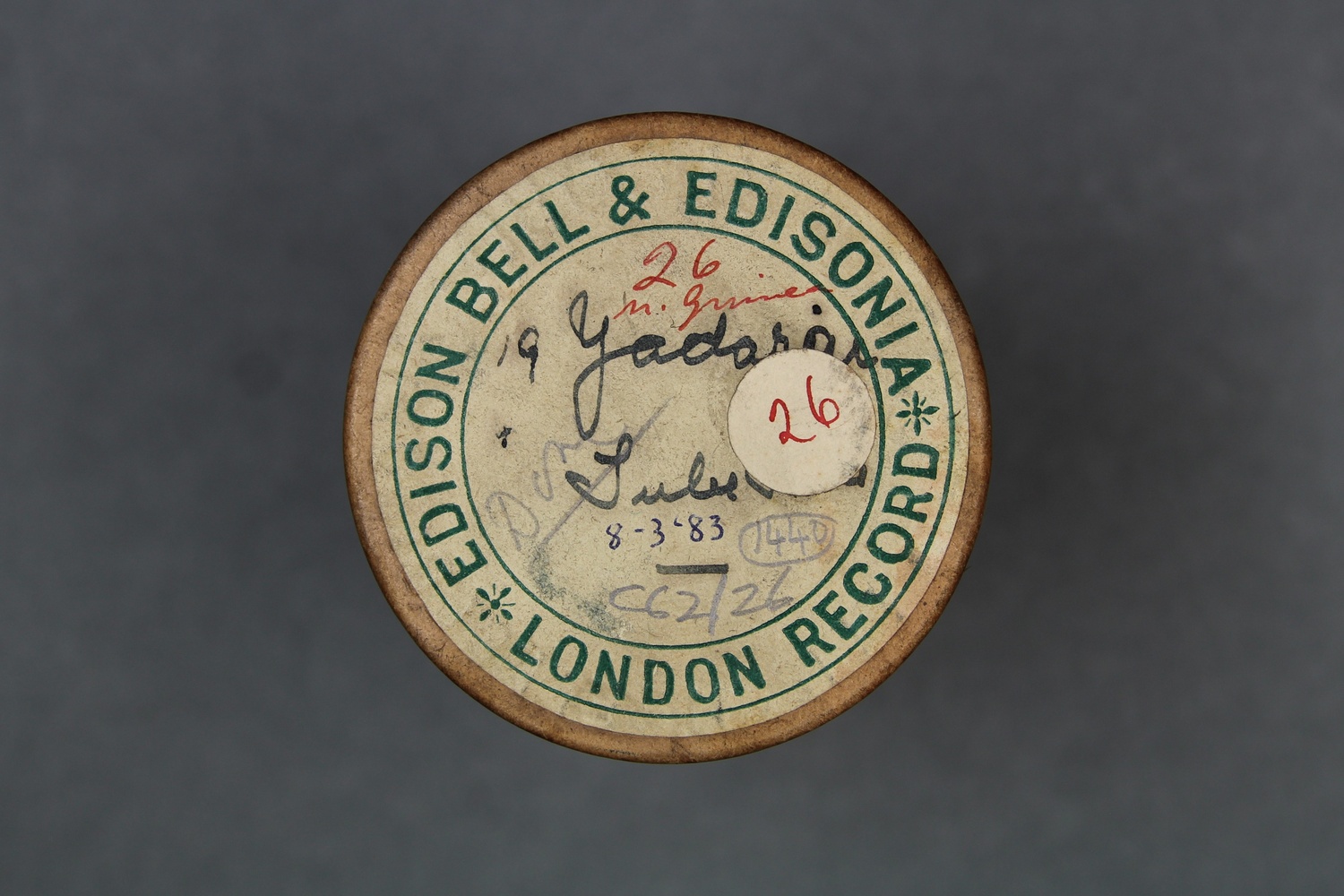      | This song is mentioned in Charles G. Seligmann, 'The Melanesians of British New Guinea', Cambridge University Press, 1910:588. | ||||||
| C62/1441 | Bona Bona Tube Tube | Unidentified (singer, male) | Tube Tube, Slade Island, British New Guinea | August 1904 | 1. Announcement: "Bona Bona. The secong song sung at the Waia ceremony, Rogeia. It was learned originally from the Durupi people of Milne Bay." 2. Unaccompanied male vocal solo. A favourite dancing song. | Good quality recording with strong signal but some surface noise. | Bwanbwana | Field recordings | Seligman, Charles Gabriel | 3'10" | Daniels Ethnographical Expedition to New Guinea 1904 | Brown wax cylinder | Daniels Ethnographical Expedition to New Guinea 1904 Cylinder Collection (C62) | British Library | 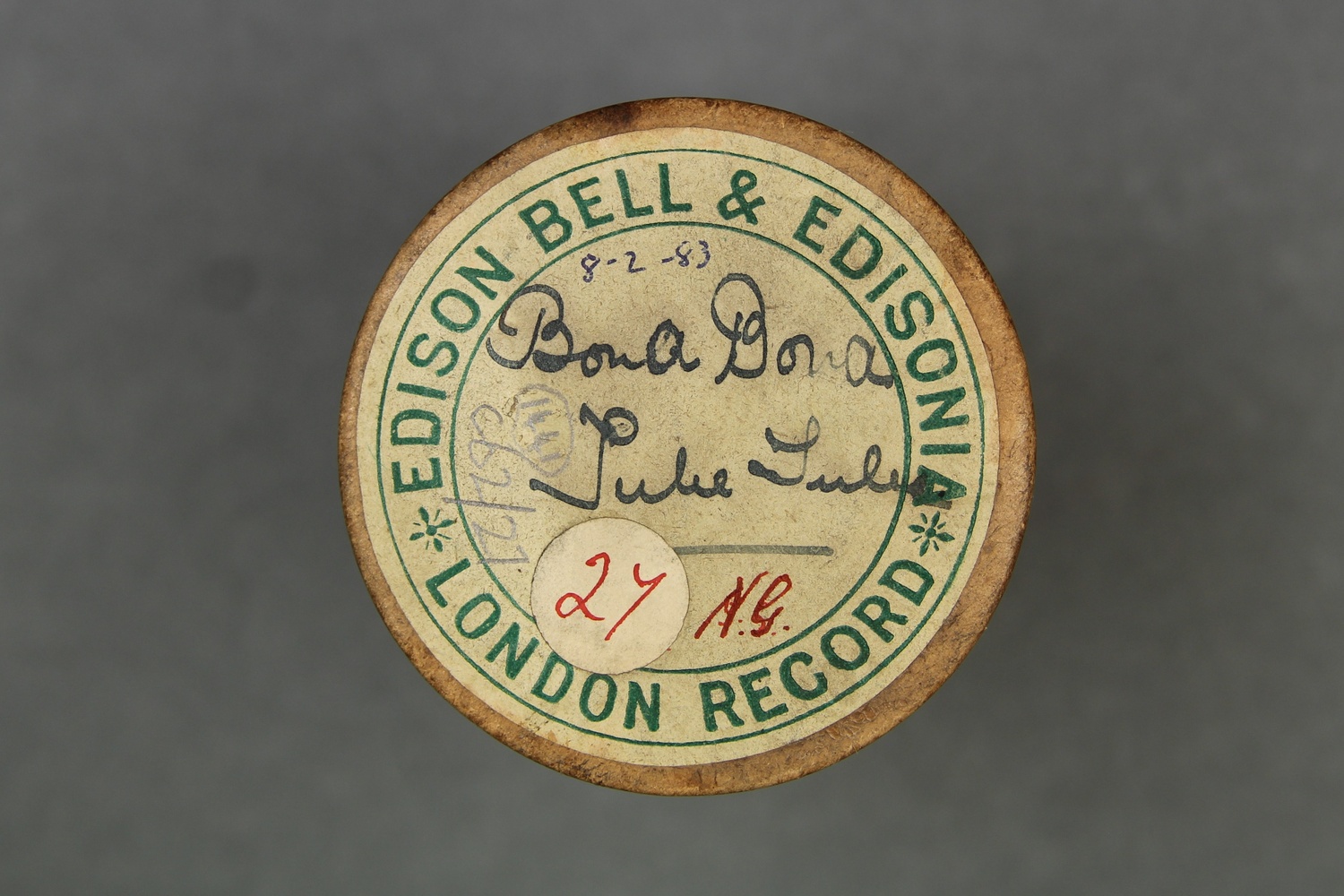      | This song is mentioned in Charles G. Seligmann, 'The Melanesians of British New Guinea', Cambridge University Press, 1910:588. | ||||||
| C62/1448 | 20 Yaubena Tube Tube | Unidentified (singer, male) | Tube Tube, Slade Island, British New Guinea | August 1904 | 1. Announcement: "Yaubena. The first song sung at the Waia ceremony, Rogeia. It was originally learned from the Durubi[?] a people from Milne Bay." 2. Unaccompanied male vocal solo. | Good quality recording with strong signal. | Bwanbwana | Field recordings | Seligman, Charles Gabriel | 3'13" | Daniels Ethnographical Expedition to New Guinea 1904 | Brown wax cylinder | Daniels Ethnographical Expedition to New Guinea 1904 Cylinder Collection (C62) | British Library | 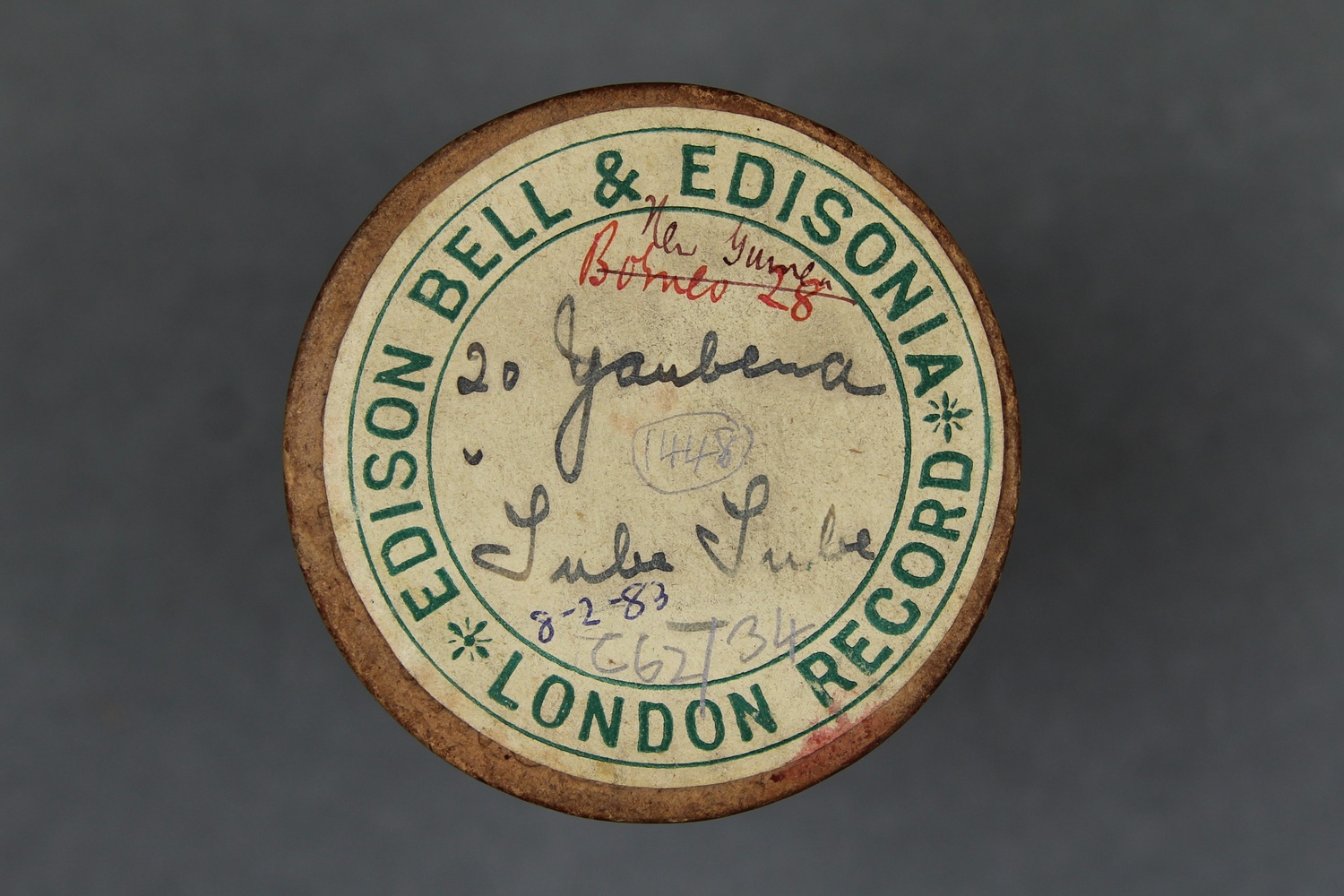      | This song is mentioned in Charles G. Seligmann, 'The Melanesians of British New Guinea', Cambridge University Press, 1910:520, 588, 753. | ||||||
| C62/1449 | 21 Gum Gum Tube Tube | Nabuyara (singer, male) | Tube Tube, Slade Island, British New Guinea | 5 August 1904 | 1. Announcement: "Wai-ina[?], a Kwararo song, called the Tube Tube Gum Gum. Sung by Nabuyara[?], August 5th 1904." 2. Unaccompanied male vocal solo. This song is said to have come from Kwararo, and is sung in canoes whilst paddling or sailing, and at other times. | Reasonable quality recording but with weak signal and surface noise. | Bwanbwana | Field recordings | Seligman, Charles Gabriel | 3'14" | Daniels Ethnographical Expedition to New Guinea 1904 | Brown wax cylinder | Daniels Ethnographical Expedition to New Guinea 1904 Cylinder Collection (C62) | British Library | 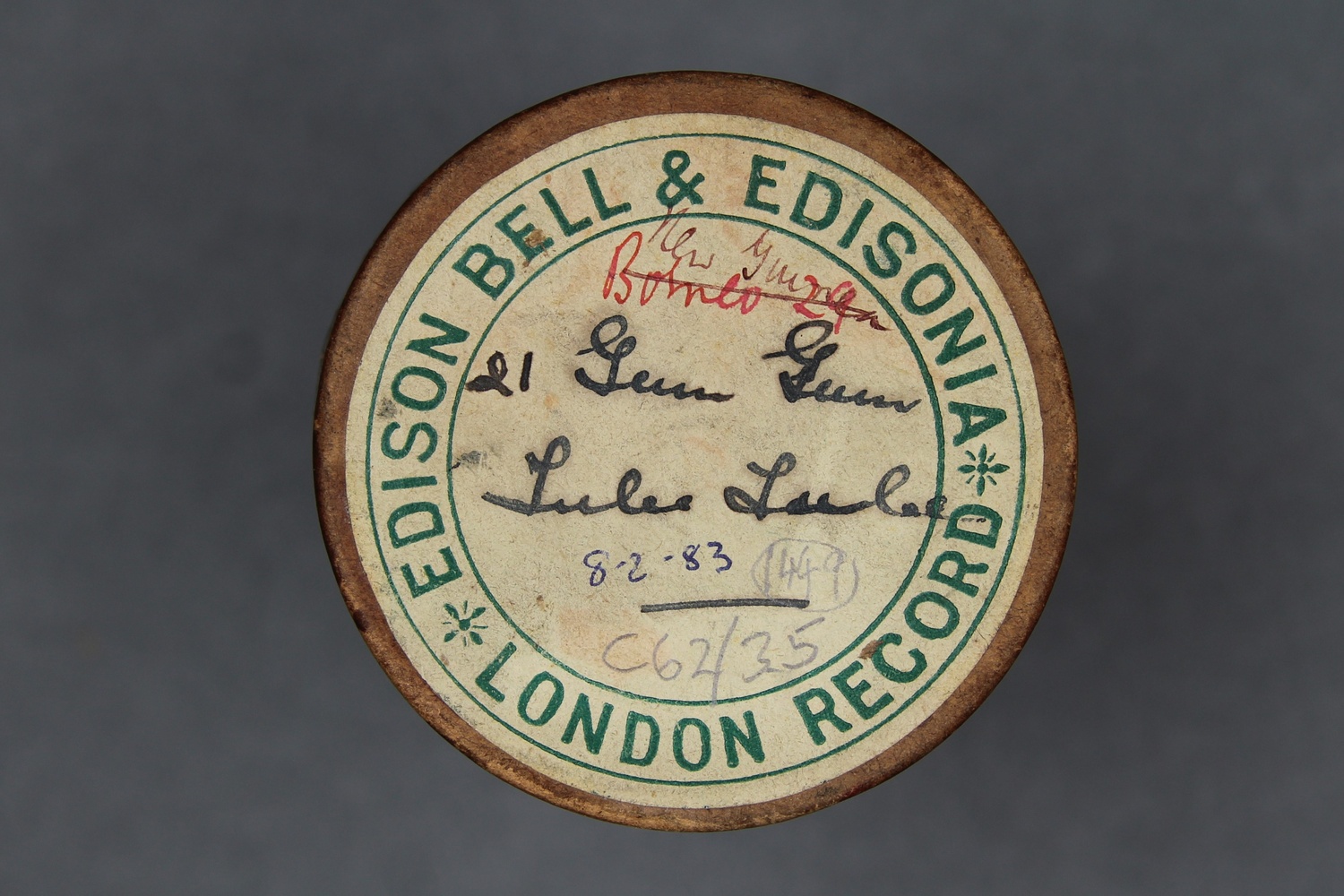      | This song is mentioned in Charles G. Seligmann, 'The Melanesians of British New Guinea', Cambridge University Press, 1910:588. | ||||||
| C62/1453 | 23 Rausi Tube Tube | Unidentified (singer, male) | Tube Tube, Slade Island, British New Guinea | August 1904 | 1. Announcement: "Tube Tube song, and dance." 2. Unaccompanied male vocal solo. A song or dance performed during the soi funeral feast and festivities. | Poor quality recording with tracking problems throughout due to broken cylinder. | Bwanbwana | Field recordings | Seligman, Charles Gabriel | 3'09" | Daniels Ethnographical Expedition to New Guinea 1904 | Brown wax cylinder | Daniels Ethnographical Expedition to New Guinea 1904 Cylinder Collection (C62) | British Library | 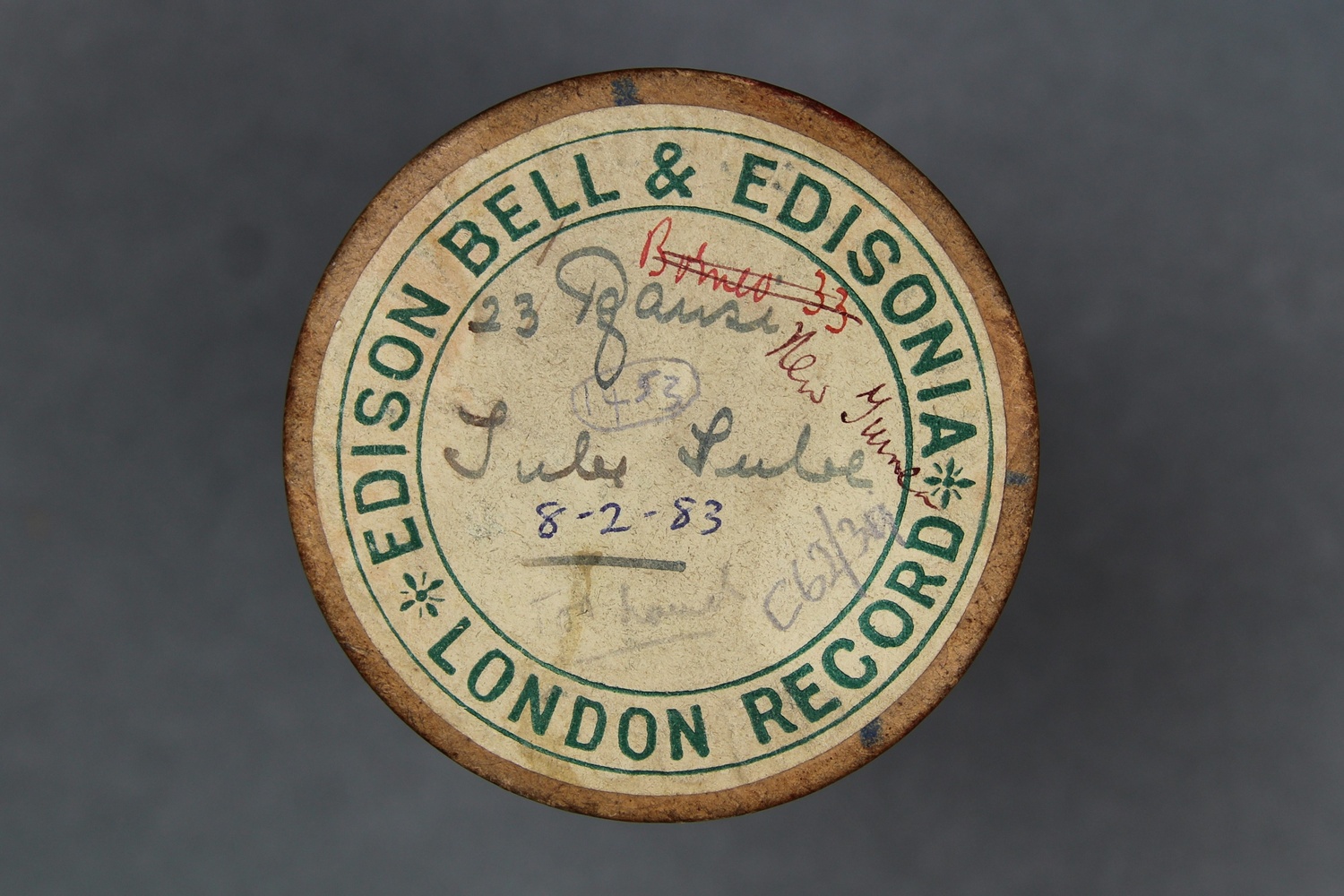      | This song may be discussed and transcribed in Charles G. Seligmann, 'The Melanesians of British New Guinea', Cambridge University Press, 1910:520, 588, 753. |



